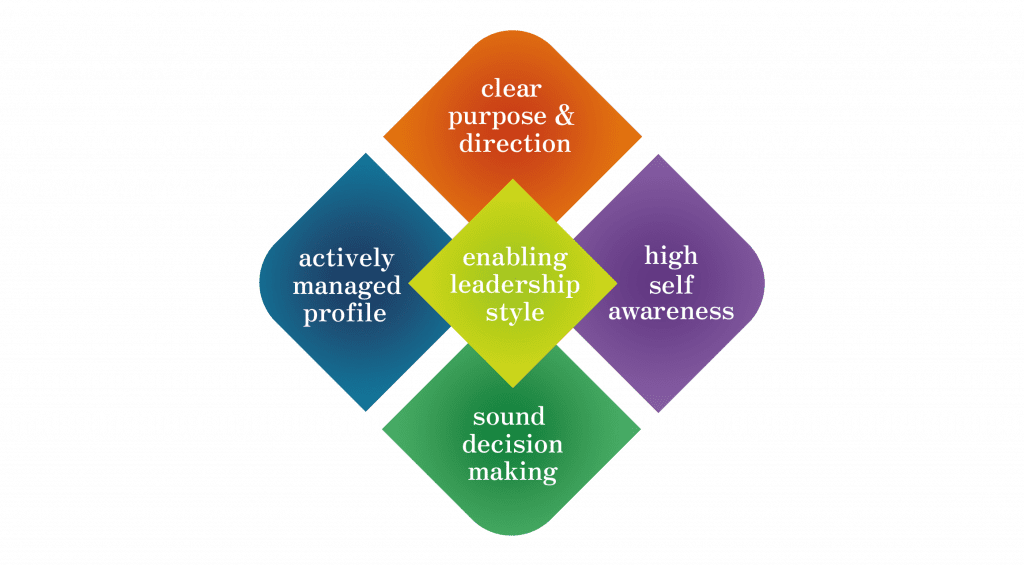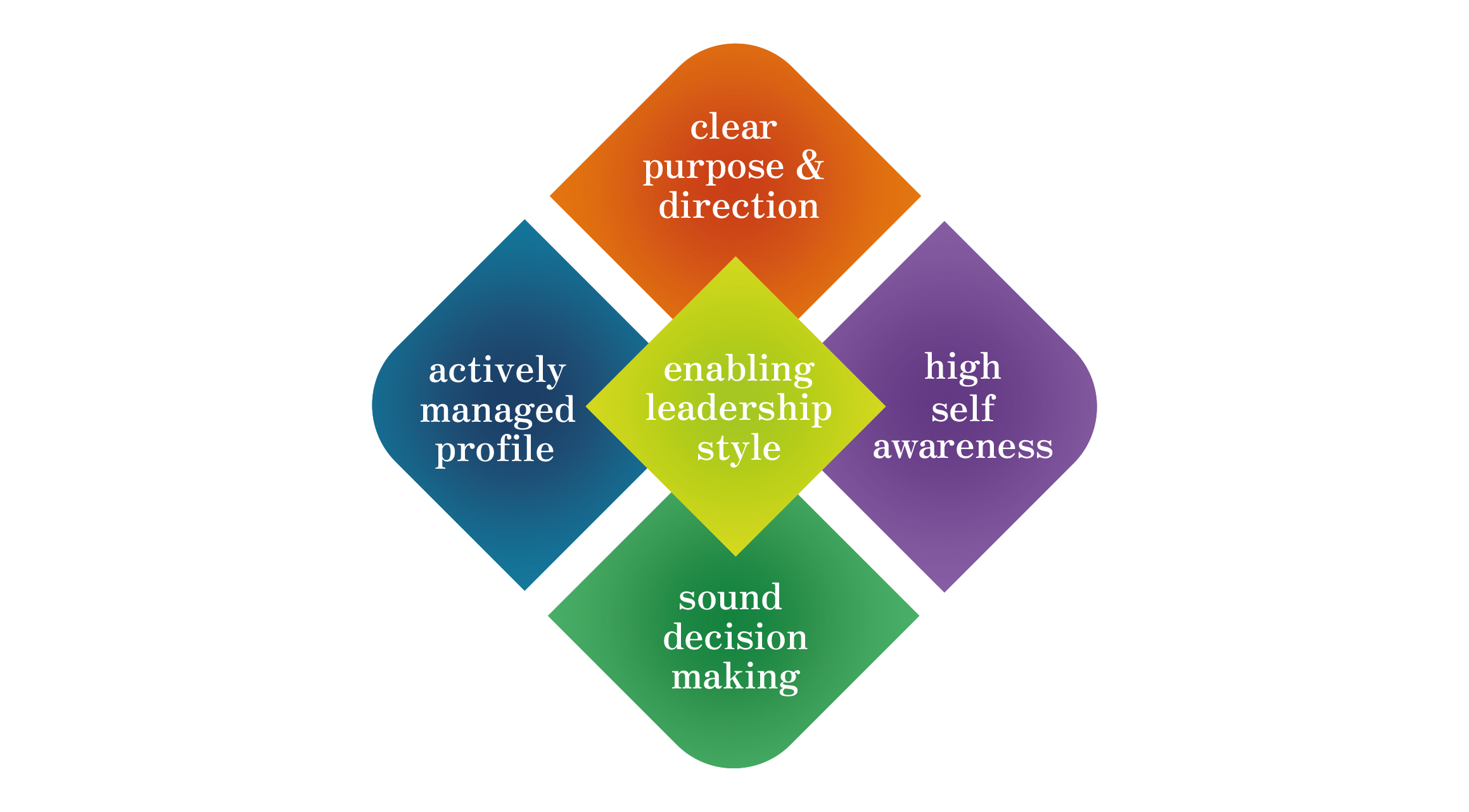In today’s fast-paced and competitive world, the success of any organisation hinges on the performance of its teams. High-performing teams are not born; they are built through a deliberate, strategic approach.
With a little thought, most of us can detail the characteristics of a high-performing team, yet not many of us have enjoyed the experience of working within one and delivering high value consistently. We tend to behave in habitual ways and do the things we have always done rather than push ourselves and our colleagues to become a high-performing team. Whilst this may keep us within our comfort zones, we do need to push beyond them if we are to truly excel.
This article explores the route to becoming a high-performing team by focusing on five critical elements: clear vision, high self-awareness, sound decision-making, well-managed profile, and an enabling leadership style.
Our research and experience show that attention paid to these five elements unlocks potential and provides teams with the capability, commitment, and confidence to elevate their performance as a high-performing team. Not only does this repeatedly deliver high-value returns for their organisations, it also delivers a high sense of satisfaction and achievement to the team, as well as inspiring and motivating others to follow suit in a virtuous cycle of high-performance value creation.

These five elements interlock and are mutually supportive – we need all of them to build high-performing teams. So, let’s explore them in more detail:
Clear Vision: the compass
A clear vision is the cornerstone of any high-performing team. It provides direction and purpose, guiding the team towards a common goal. A well-defined vision acts as a beacon, illuminating the path ahead and ensuring that every team member is aligned with the organisation’s objectives. It fosters a sense of unity and commitment, motivating team members to work collaboratively towards achieving their goals.
To establish a clear vision, leaders must engage with their team members, encouraging open communication and feedback. This collaborative approach ensures that the vision resonates with everyone, creating a shared sense of ownership and accountability. Regularly revisiting and refining the vision helps to keep it relevant and inspiring, driving the team towards continuous improvement.
High Self-Awareness: the mirror
High self-awareness is another critical element in the journey towards becoming a high-performing team. It involves understanding one’s strengths, weaknesses, and the impact of one’s actions on others. Self-aware team members are more likely to engage in constructive feedback, fostering a culture of continuous learning and development. The goal here is to achieve ‘real-time self-awareness,’ which enables us to develop empathic and productive relationships in an adaptive way that is sensitive to the context and purpose of each interaction.
To cultivate high self-awareness, teams need to engage in regular reflection and self-assessment processes. These activities encourage individuals to evaluate their performance, identify areas for improvement, and set personal development goals. Additionally, fostering a culture of open and honest communication helps team members to gain insights into their behaviour and its impact on team dynamics.
Sound Decision-Making: the engine
Sound decision-making is essential for the success of any team. It involves evaluating options, considering the potential outcomes, and making informed choices that align with the team’s goals and values. Effective decision-making requires a combination of critical thinking, collaboration, and a willingness to take calculated risks.
To enhance decision-making capabilities, teams can adopt structured approaches such as brainstorming sessions, decision matrices, and scenario planning. These techniques help to ensure that all perspectives are considered, and the best possible decisions are made. Encouraging a culture of accountability and learning from past decisions also contributes to the development of sound decision-making skills.
Well-Managed Profile: the network
A well-managed profile is crucial for building and maintaining a positive reputation, both within and outside the organisation. It involves effective communication, relationship-building, and managing the team’s image and brand. A strong profile enhances the team’s credibility, attracting opportunities and resources that contribute to its success.
To manage their profile effectively, teams should focus on clear and consistent communication, both internally and externally. This includes regular updates on progress, achievements, and challenges, as well as engaging with stakeholders and building strong relationships. Additionally, teams should actively seek feedback and use it to improve their performance and reputation continually.
An Enabling Leadership Style: the catalyst
An enabling leadership style is the final critical element in the journey towards becoming a high-performing team. Enabling leaders empower their team members, providing them with the support, resources, and autonomy they need to succeed. They foster a culture of trust, collaboration, and innovation, encouraging team members to take ownership of their work and contribute to the team’s success.
To adopt an enabling leadership style, leaders should focus on building strong relationships with their team members, understanding their needs and aspirations, and providing regular feedback and support. They should also create an environment that encourages experimentation and learning, allowing team members to take risks and learn from their experiences. By empowering their team members, enabling leaders create a sense of ownership and accountability, driving the team towards high performance.
conclusion
The route to becoming a high-performing team is a continuous journey that requires a deliberate, strategic approach. Central to this journey is the concept of co-creative endeavour, where team members work collaboratively to achieve shared goals.
These elements work together to create a cohesive, motivated, and high-performing team that achieves its goals both strategically and operationally, drives the organisation forward at pace delivering clear competitive advantage, and inspires all members of the organisation to continually strive to achieve more in a high support/high challenge/high trust environment.


